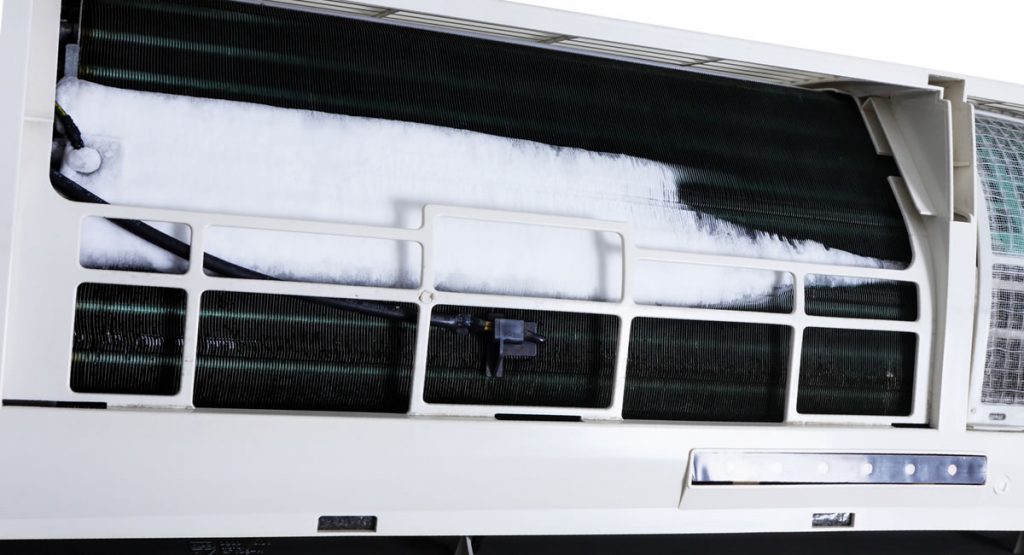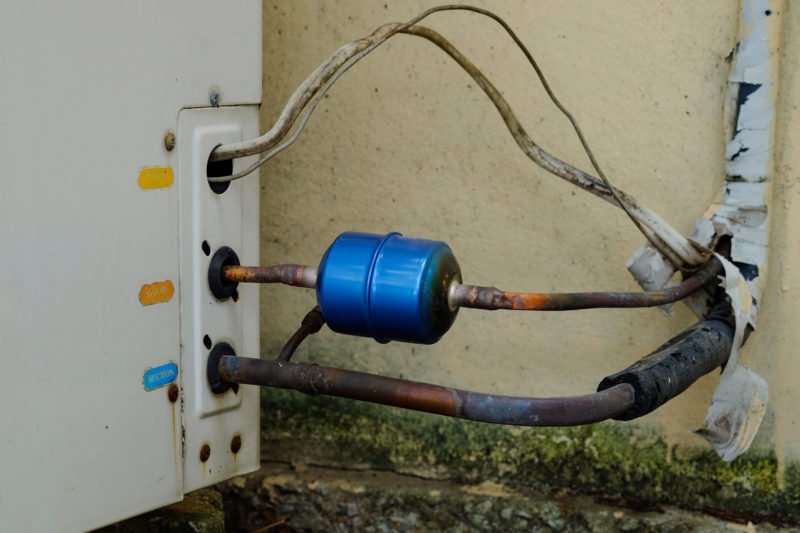They are making a number of great points relating to How can I fix an air conditioner’s frozen pipe? overall in this article underneath.

Introduction
Finding that your AC pipe is frozen can be worrying, specifically during hot summer season when you count on your ac system one of the most. Recognizing what to do in such a scenario is crucial to prevent further damage to your air conditioning system and guarantee your convenience inside.
Recognizing the Causes
Several elements can contribute to the freezing of an AC pipeline. Recognizing these causes can help you resolve the problem efficiently.
Absence of Airflow
One typical cause of an icy air conditioner pipeline is inadequate airflow. When the air movement over the evaporator coil is limited, it can trigger the coil to drop below freezing temperature level, resulting in ice development on the pipeline.
Low Refrigerant Levels
Not enough refrigerant degrees in your air conditioning system can additionally lead to an icy pipe. Reduced refrigerant levels can create the pressure in the system to go down, leading to the cold of wetness on the evaporator coil.
Winter Conditions
In colder environments, freezing temperature levels outside can contribute to the cold of AC pipes. If your a/c device is not correctly protected or if there are leakages in the ductwork, cool air can penetrate the system, creating the pipeline to ice up.
Dirty Air Filters
Unclean or clogged air filters can restrict airflow in your AC system, leading to numerous concerns, consisting of a frozen pipe. It's essential to change or cleanse your air filterings system routinely to ensure correct air flow and avoid ice build-up.
Indicators of a Frozen Air Conditioning Pipe
Recognizing the indications of a frozen a/c pipe is essential for timely activity.
Reduced Airflow
If you observe a significant decline in airflow from your vents, it might show an icy pipe.
Ice Buildup on the Pipe
Visible ice build-up on the cooling agent line or the evaporator coil is a clear indication of a frozen air conditioner pipe.
Strange Sounds from the Unit
Unusual noises, such as hissing or bubbling, coming from your a/c device can signify that there's ice existing on the pipeline.
Immediate Actions to Take
When confronted with an icy a/c pipe, it's necessary to act rapidly to prevent further damages to your air conditioning system.
Shutting off the AC
The first step is to shut off your a/c unit to prevent the system from running and aggravating the problem.
Checking for Blockages
Check the area around the interior unit for any kind of obstructions that might be obstructing air flow, such as furnishings or curtains.
Thawing the Pipe
You can make use of gentle techniques like positioning towels soaked in warm water around the icy pipeline to help thaw it slowly.
Preventive Measures
Taking safety nets can aid avoid future events of an icy AC pipe.
Regular Maintenance Checks
Schedule routine maintenance contact a specialist HVAC professional to ensure that your AC system is running efficiently.
Transforming Air Filters
Routinely change or cleanse your air filters to prevent air movement limitations and maintain optimum performance.
Shielding Exposed Pipes
If your AC pipes are subjected to chilly temperature levels, take into consideration protecting them to prevent cold throughout winter season.
Seeking Professional Help
If DIY approaches fall short to deal with the issue or if you're uncertain about exactly how to proceed, it's ideal to look for support from a qualified HVAC service technician.
When DIY Methods Fail
If your attempts to thaw the pipeline or address other concerns are unsuccessful, it's time to hire an expert.
Value of Hiring a Professional HVAC Technician
A certified HVAC professional has the know-how and devices required to diagnose and repair problems with your air conditioner system securely and successfully.
Conclusion
Dealing with an icy air conditioner pipeline can be a frustrating experience, however understanding how to respond can assist minimize damage and bring back comfort to your home. By understanding the causes, acknowledging the indicators, and taking punctual action, you can efficiently resolve the problem and prevent future incidents.
What to Do If Your AC Line Is Frozen
Make Sure All Supply and Return Air Vents Are Open
If you notice problems with airflow, the first thing you should do is check your supply and return vents. Supply vents distribute clean, conditioned air throughout your home. As this air becomes stale, it’s pulled into the return vent, where it’s reconditioned before being sent back out through the supply vent.
When these vents are closed, air won’t flow in the home. Before examining your AC, check the vents in every room and ensure they’re all open.
Check for a Dirty Air Filter
Another possible cause of limited airflow is a dirty air filter. Your air conditioner’s filters catch elements you don’t want to breathe in, such as dirt and dust. Over time, filters can become clogged, ultimately blocking air from flowing in and out. The lack of airflow can then cause the entire coil to freeze and will completely restrict any air from moving through it. The AC may need to be powered off for one to two days to allow the coil to thaw after replacing the filter to allow proper functioning of the unit. This debris can also accumulate on your AC’s evaporator coil, requiring a more serious repair. In general, air filters should be cleaned regularly (about every two weeks).
Assess Your Outdoor Unit
In addition to checking your AC, assessing the outdoor unit is a good idea. Also known as the condensing unit, it works with your interior unit to release heat outside. An issue with the outdoor unit can result in rising internal temperatures.
Overgrown Shrubs or Clogged Leaves
From leaves and twigs to shrubs and debris, there’s no shortage of outdoor elements that can accumulate around your condensing unit. When these elements get lodged inside the unit, they can block airflow. Fortunately, removing the blockage can solve the problem.
Sounds of a Broken Fan
Shrubs and leaves aren’t the only things that can impede your outdoor unit’s airflow. If the fan is broken, the unit won’t be able to properly get rid of heat — which means the internal temperature won’t go down. First, make sure the fan is spinning. If it is, check for the following sounds of a broken fan:
Buzzing Rattling Screeching Hissing Clicking Preventative Measures
Nobody wants to deal with a frozen AC line. In addition to causing problems with your air conditioner, they require professional repairs. On the bright side, there are preventative measures you can take to help ensure this issue doesn’t arise in the first place.
https://www.coopergreenteam.com/blog/what-to-do-if-ac-line-frozen

We hope you liked our excerpt about Have a Frozen AC Line? Here’s How to Fix It. Thanks a ton for taking the time to browse our posting. So long as you enjoyed reading our article plz be sure to pass it around. We love reading our article about Why Is Ice On My Outside Air Conditione.
Book Your Service